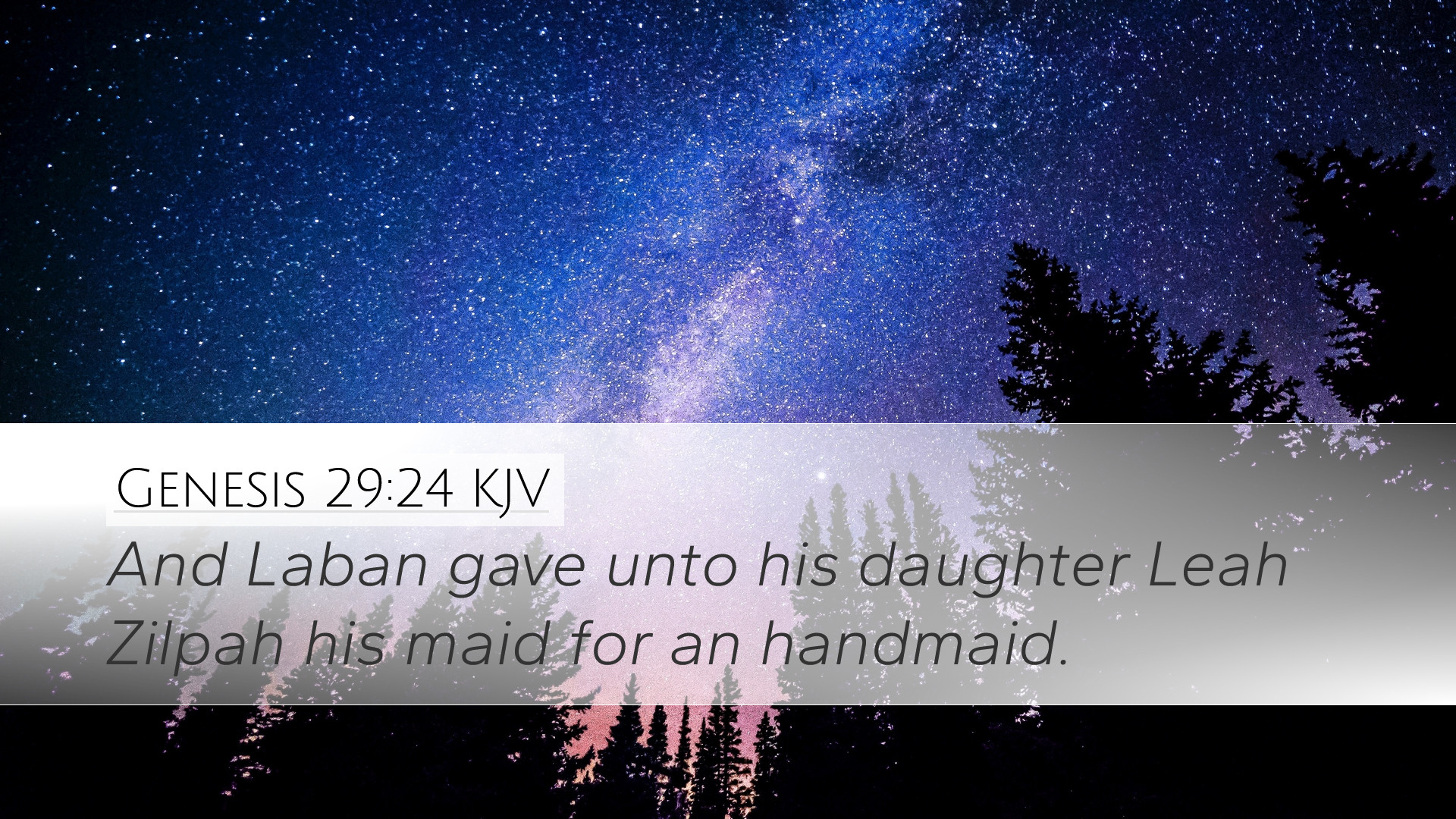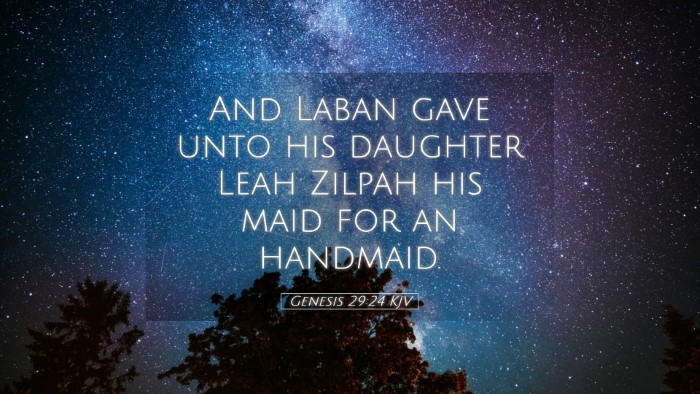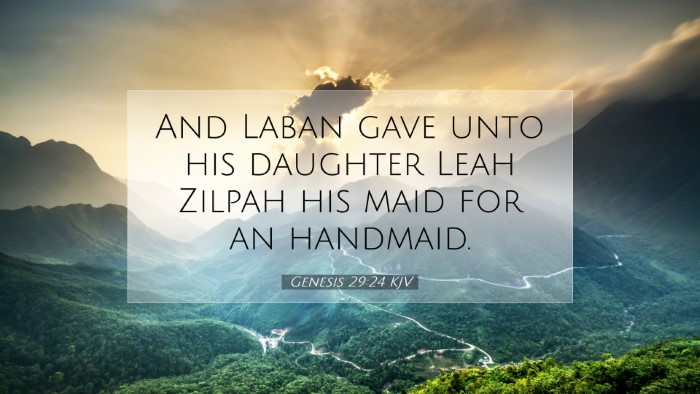Commentary on Genesis 29:24
Verse: Genesis 29:24 - "And Laban gave unto his daughter Leah Zilpah his maid for an handmaid."
Introduction
This verse occurs in a crucial context in the narrative of Jacob's life. It highlights the customs of marriage and service prevalent in biblical times, and sets the stage for the complex family dynamics that unfold throughout the book of Genesis. Various public domain commentaries provide deeper insights into the text, revealing theological, cultural, and historical dimensions that are significant for understanding this passage.
The Context of Genesis 29
Genesis 29 describes the events that transpire after Jacob flees from his brother Esau and travels to Laban's household. Here, Jacob meets Rachel, who captivates him with her beauty, and negotiates to work for seven years to marry her. However, Laban deceives Jacob by marrying him to Leah instead. This verse comes after this twist, where Leah is given the maid Zilpah, establishing an important aspect of the polygamous relationships that characterize Jacob's family.
The Role of Women and Servants
According to Matthew Henry's Commentary, the giving of Zilpah to Leah signifies the importance of female companionship and domestic contribution within the familial structure of the time. Wives often had servants who shared in the responsibilities of childbearing and housekeeping. This reflects the broader cultural practice of using maidservants to bear children when a wife was unable to do so.
Albert Barnes notes that Zilpah's role as a handmaid is significant, as it illustrates not only the social customs but also the tension arising from familial rivalries—between Leah and Rachel—over Jacob's affections. The presence of handmaids in this narrative serves as a reflection of the societal norms concerning marriage and motherhood among the patriarchs.
Theological Implications
Adam Clarke's Commentary delves into the theological implications of this passage. Clarke emphasizes that God’s providence is at work even in the schemes of Laban and the relational tensions between Jacob's wives. The complexities of this family setup set the stage for God’s unfolding plan in the midst of human sinfulness and rivalry.
This situation shows a recurring theme of divine sovereignty throughout Genesis. Despite human deception, God's purpose prevails. This lesson is vital for pastors and theologians, as it reminds them of God's overarching control over history and individual lives, even amidst trials and hardships.
Cultural Context
Understanding the cultural backdrop of this passage is essential. In ancient Near Eastern cultures, marriage often involved strategic alliances, where the provision of servants created a wider familial network. This practice is elaborated on by Henry, who highlights the social pressures and expectations placed upon women to bear children.
- Maids were often seen as second-class wives or concubines, fulfilling roles dictated by their mistresses.
- Such practices underscore the patriarchal nature of society, where women had limited agency and their worth was often tied to motherhood.
Family Dynamics and Rivalry
The rivalry between Leah and Rachel, initiated by this arrangement, leads to significant events in the later chapters of Genesis. As noted by Barnes, the arrangement of sparing Rachel from childbirth while Leah is given the maid speaks volumes about the emotional and psychological complexities that will unfold in the family. This rivalry is emblematic of the broader theme of competition found within Genesis, particularly among the matriarchs.
This tension serves as an important lesson on human relationships, particularly how jealousy and competition can permeate familial bonds.
Conclusion
Genesis 29:24 is a rich verse that encapsulates a multitude of themes relevant to understanding the Genesis narrative. From the cultural practices surrounding marriage to the sovereignty of God amidst human deceit, this verse offers depth for theological reflection. It provides a narrative framework in which God works through complicated human situations to bring about His divine purposes.
For pastors, students, and theologians, it serves as an illustration of the balance between individual actions and divine providence, the exploration of complex relationships, and the hard realities of human nature. Further, it calls for a compassionate understanding of individuals in contexts of rivalry and struggle, urging engagement with the text as a source of divine wisdom in today’s relational dynamics.


